When any disease occurs, doctors do everything possible to restore the organ and its functions, so laser treatment often helps to solve the problem. In modern medicine, there are several methods that allow you to eliminate the stones.
But using a laser, you can restore health much more efficiently than with the help of drug therapy. In turn, this procedure has some negative points. And the patient should know about them.
The disease declares itself when concrements have formed in the gall bladder and ducts, due to which, in turn, cholecystitis may develop. Stones have a heterogeneous composition.
Thus, solid formations can be:
- cholesterol;
- bilirubin (having black or brown color);
- calcareous or mixed (with a predominance of calcium in the structure).
The disease does not appear just like that.
Most often it is triggered by:

- Excessive body weight.
- The narrowing of the ducts.
- Hepatitis chronic form.
- Cirrhosis of the liver.
- Cholecystitis.
- The use of fatty foods and animal protein in large quantities.
- Salt accumulation.
- Increased breakdown of red blood cells.
- Abnormal manifestations of the liver and gallbladder, having a congenital character.
- Repeated bearing a child.
- Decreased motor activity.
Laser removal of stones is otherwise called lithotripsy. It is effective if there are cholesterol stony formations.
The main thing is that their diameter does not exceed 2-3 cm, and the allowable number of concrements is not more than three. Usually such stones are removed by the laser completely without any complications.
Laser crushing is increasingly used in medical practice. There are cases when surgery is not possible. Then laser treatment is applied. It becomes relevant if general anesthesia cannot be performed.
The situation is explained by the presence of cholelithiasis:
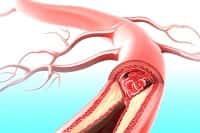
- diseases of the cardiovascular system;
- cardiovascular insufficiency;
- severe pulmonary disease;
- cardiopulmonary insufficiency.
Patients with the listed diagnoses carried out by laser. Such treatment involves the complete removal of stones, while the body is preserved. Due to this, the body continues to function normally. If you remove the gallbladder, then you can expect serious consequences.
That is why laser crushing is so much in demand when it comes to which gallbladder treatment is most suitable for the patient.
Features of lithotripsy
Crushing of stones occurs at the moment when the laser beam touches the element undergoing destruction. First, the doctor makes a puncture in the place where the organ is located. Thanks to a special device that is introduced, you can display an image showing fragmentation on the monitor. Next, install a catheter with a laser.
Through the puncture done, the beam begins grinding the stones that were formed in the gallbladder. Crushing leads to the conversion of stones into sand.
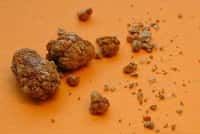
Sometimes there may be small fragments. Further split formations themselves leave the body.
Removing stones does not take long. Literally in half an hour the procedure will end. The patient will not need to constantly stay in the hospital. Treatment is outpatient.
The crushing of solid formations is accomplished with the help of an optical quantum generator. It creates coherent radiation of high density and power. Due to the small cross-section of the light beam, the laser is actively used during various surgical operations.
If necessary, you can contact the lithotripsy center, where, thanks to special equipment, stones are removed in the gallbladder.
The presence of special techniques allows crushing all patients, regardless of age.
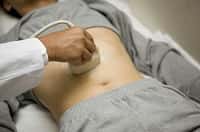
Before you receive a referral for the removal of solid formations, the patient must be fully examined. If health condition permits, laser crushing will be recommended.
In some cases, patients prepare for lithotripsy while in hospital. This applies in particular to young children and older people. It is possible that supportive therapy will be used as a supplement. Lazoletreatment is considered a quick and painless way. Many patients are attracted by the fact that there is no need for prolonged hospitalization.
Undesirable consequences of the procedure
Removal does not always relieve the patient from the disease. There is a high probability that stones will form again. It is necessary to adhere to a diet that prevents the occurrence of relapses. But sometimes these methods do not work.
In addition, the removal of calculus can adversely affect health. Naturally, the procedure is carried out by a qualified specialist. But no one is immune from accidents. The direction of the laser beam must be strictly controlled.
But if the doctor at least a millimeter misses and falls on the wall of the body, then the burn will be the strongest.
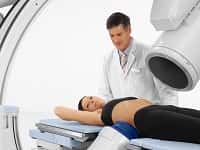
In addition, it will deliver a lot of discomfort. As a result, an ulcer, gradually increasing in size. Accordingly, the person will again fall on the operating table.
Of course, a huge number of procedures performed proves their effectiveness. But the patient must be aware that such treatment can be extremely dangerous for him. Especially since a person will deal with complications on his own, and hardly anyone will be responsible for this. Unfortunately, the patient may not even report the incident.
In short, if we talk about the shortcomings, the use of a laser can lead to:
- burn organ mucosa;
- injury to the walls of the sharp edges of crushed stones.
The person himself must decide whether this method is suitable for him or not. Moreover, the procedure does not get rid of solid formations forever - they begin to form again at a certain time. That is, you will need to again seek help, which would entail considerable costs.
Despite the presence of negative aspects, laser treatment is still considered popular. If the medical facility is provided with special expensive equipment, then anyone who suffers from gallstones can ask for help.
Crushing kidney stones is a highly effective method of treating nephrolithiasis with a lower incidence of complications than with abdominal operations. At the moment there are several effective ways of this procedure.
Types of interventions and characteristics of the main variant
Modern methods of crushing kidney stones are called lithotripsy and are represented by 4 main types:
The selection of the required method of crushing kidney stones is carried out by the operating urologist and depends on several indicators that allow you to choose the most effective way of influence in each case:
- the chemical composition of calculus;
- quantities;
- localization;
- sizes;
- concomitant pathology.
Shock wave action
By shock-wave lithotripsy of the remote type imply the fragmentation of a calculus by a shock wave directed at the area where the stone is found through muscle tissue. The procedure is carried out using a special device - lithotripter. The pressure on the stone is transmitted through the aquatic environment. His destructive energy affects the stone. The consequence is its fragmentation. At the moment - this is the most effective and safe way.
A calculus is estimated on 2 X-ray television positions. There are several ways to do this:
- hydraulic;
- piezoelectric;
- electromagnetic;
- laser crushing method.

The principle of laser lithotripsy
The duration of the procedure does not exceed an hour. There is an operation in the clinic or hospital. The patient is placed on a special table. Concretions are focused, after which the formation of a shock wave begins. The whole process is visualized on the monitor. When a stone is fragmented into particles less than 0.5 cm, the procedure is terminated. Observation carried out on an outpatient basis. Its term is 2 weeks.
However, this procedure is not considered atraumatic. Under the action of shock waves, kidney injury occurs. Normally, its effects are eliminated within a week.
With an incorrectly chosen strength and intensity of the destructive energy, gross changes in the organ are observed.
Indications and contraindications
Crushing stones by this method has a number of indications for:
- Concrements of the pelvis with dimensions of more than 2 cm, ureter - up to 1 cm.
- Nephrocalcinosis.
- The lack of effect of long-term conservative treatment.
- Intense pain syndrome that reduces the patient's ability to work.
- Concrements of spongy dystopic or transplanted kidney.
- In the presence of concomitant somatic pathology, including heart attacks, strokes, operations on the heart and blood vessels.
Despite the great success of this method, it has a large number of contraindications:
Complications of remote shockwave lithotripsy include:
- acute development;
- difficulty of outflow of urine due to the accumulation of a large number of calculus fragments up to 0.5 cm in size in the urinary tract - “stone path”;
- renal colic that does not respond to therapy.
For the prevention of such consequences during the operation, an ureteral stent is installed to prevent blockage.
Drug support (herbal remedies), physiotherapy and high fluid intake (up to 2-2.5 liters) are also prescribed.
Other methods of lithotripsy: features of
In addition to the shock-wave method of lithotripsy, stones can be crushed by other methods. They are used less frequently and have certain features, which we dwell on.
Percutaneous crushing
Crushing kidney stones using the percutaneous (percutaneous) method involves puncture of the pyeo-pelvisal system through the skin of the loins. The channel created in this way is expanded to the desired size for the insertion of the endoscope. Under visual control, contact crushing of the stone takes place, followed by its removal (litolapaxy). The maximum allowable number of procedures is 2 times. Indications consider:
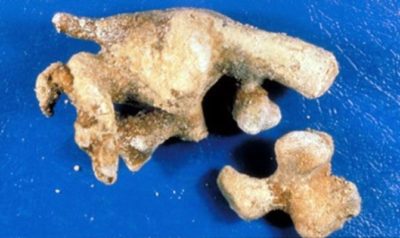
This procedure is dangerous for the development of intraoperative effects. After it, a number of complications can occur:
- Injury of intrarenal structures with progressive bleeding.
- Burn or tear the walls of the cups, pelvis.
- "Pushing" the stone in the renal tissue.
- TUR syndrome, when a large amount of antiseptic, administered during the operation enters the blood.
Prevention of such serious consequences is a good visualization of calculus, contact with it of an energy source and high skill of the surgeon.
Endoscope crushing
Endoscopic contact lithotripsy is performed with the diagnosed stones of the lower third of the ureter - simple and impacted. The patient in such cases shows epidural anesthesia. With the ineffectiveness of endoscopic lithotripsy, the remote method is recommended. The procedure is carried out by summing up the energy source and direct contact crushing of kidney stones. There are 2 types:
Review of our reader Natalia Barkovskaya
Recently, I read an article that tells about the drug "Renon Duo" for COMPLEX treatment of KIDNEYS and URECONAL DISEASE. With this tool you can FOREVER get rid of stones in the kidneys at home.
I was not used to trusting any information, but I decided to check and ordered the packaging. I felt relief already on the 3rd day: pain and cramps subsided when urinating subsided, swelling began to subside, and after 3 weeks of administration, I already felt fine. The mood improved, the back pains disappeared, the desire to live and enjoy life again appeared! Try it and you, and if anyone is interested, then the link to the article below.
- Ureterolithotripsy.
- Nephrolithotripsy.
Contact lithotripter crushes stone using ultrasonic, hydraulic, pneumatic, laser energy. Complications arise from the rough holding of the necessary tool:
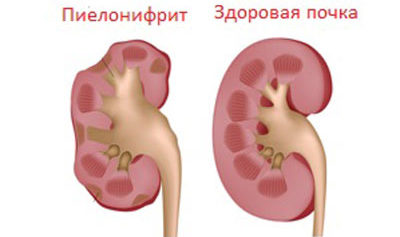
The mechanical consequences of crushing kidney stones require urgent surgical intervention, since they pose a danger to human life.
For the prevention of complications associated with the further allocation of fragments, the installation of the ureteral dilator for a period of 3 days is shown. Also during the operation, a number of undesirable consequences may arise related to allergic reactions to the injected contrast agent.
When migrating calculus to the cup-pelvis system or the upper third of the ureter, remote shock-wave lithotripsy is recommended.
Features of endoscopic and percutaneous intervention
Contraindications for these methods are:
- acute urethritis, prostatitis, epididymitis, cystitis, pyelonephritis;
- contrast agent allergy;
- poor visualization of stones;
- cicatricial deformity of the ureter due to previously performed operations on the pelvic organs;
- organic pathology of the heart and blood vessels in the stage of decompensation;
- cachexia;
- multiple stones;
- large dimensions of prostate adenoma;
- acute stroke;
- pregnancy.
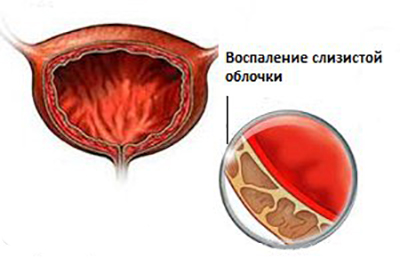
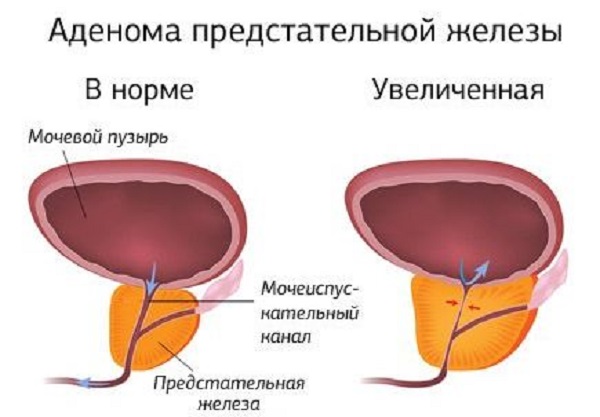
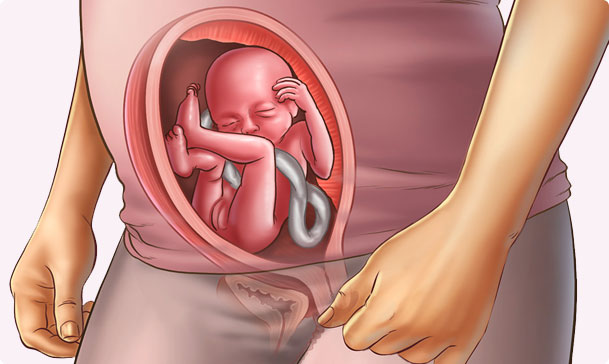
Procedures are performed under anesthesia - local, general intravenous, epidural - only in a hospital where there is x-ray surgery. An anesthesiologist-resuscitator observes the patient during the operation. After surgery, taking a short course of antibiotics, anti-inflammatory, weak diuretic drugs.
If a patient has multiple stones and their coral form, then the crushing of kidney stones is carried out in combination. It is shown at the same time carrying out a remote and percutaneous lithotripsy.
In such cases, the first stage consists in the maximum possible crushing and removal of the calculus by the percutaneous contact method. Stage 2 involves remote shock-wave lithotripsy to destroy the remaining fragments. A prerequisite for this is the creation of a normal outflow of urine from the kidney by its drainage. This is done by setting nephrostomy - a special hypoallergenic tube.
 Thus, in each case, the operating doctor decides which method of lithotripsy to use in order to save the patient from the stone with the least injury to the organ. This includes not only clinical data, but also the equipment of the medical institution.
Thus, in each case, the operating doctor decides which method of lithotripsy to use in order to save the patient from the stone with the least injury to the organ. This includes not only clinical data, but also the equipment of the medical institution.
Only highly qualified urologists know how to crush kidney stones most safely and effectively. Modern methods of lithotripsy have a small percentage of complications, which ensures their wide distribution. The operation does not save the patient from relapse, but makes the patient feel better.
Do you still think that it is impossible to get rid of STONES in KIDNEYS?
Judging by the fact that you are reading these lines now - the victory in the fight against UPCOMAN DISEASE is not on your side yet ...
And have you already thought about surgery and the use of toxic drugs that advertise? It is understandable, because the KIDNEYS can not be tolerated. And ignoring the disease can lead to serious consequences ...
- low back pain ...
- frequent painful urination ....
- puffy face, bags under the eyes, swollen arms and legs ...
- elevated pressure and temperature ....
- blood in the urine ...
All these symptoms are familiar to you firsthand? But perhaps it is more correct to treat not the effect, but the cause? We recommend that you familiarize yourself with the new method from Elena Malysheva, in the restoration of kidneys and the treatment of URECONAL DISEASE ...
Cholelithiasis - a fairly common pathology, which affects about 10% of the adult population in Russia, Western Europe and the USA, and in the age group over 70 years, this figure reaches 30%. It occurs predominantly in industrialized countries, where people consume large quantities of food rich in animal protein and fats. According to statistics, in women, cholelithiasis is diagnosed 3-8 times more often than in men.
The gallbladder is an organ adjacent to the liver and acts as a reservoir for storing bile, which is produced by the liver. Bile is necessary for complete digestion of food and has a complex composition. Its main components are cholesterol and bilirubin (pigment produced by the liver). The main causes of gallstones include a high content in the composition of bile, violations of its outflow and stagnation, as well as infection of the gall bladder.
With prolonged stagnation of bile, cholesterol is precipitated, which gradually leads to the formation of microscopic elements (“sand”), which increase in size over time and form larger formations (concrements).
The size of the gallstones varies widely, from a few millimeters to a few centimeters. In some cases, one stone may occupy the entire cavity of the distended gallbladder. Stones with a diameter of 1–2 mm can pass along the bile ducts; the presence of larger stones leads to the appearance of clinical signs of gallstones.
In most cases, the disease is asymptomatic, but in the event of pronounced clinical manifestations, it is often necessary to resort to emergency measures.
The typical symptoms of JCB include sudden bouts of biliary (hepatic) colic, which are accompanied by pain in the right hypochondrium, nausea, signs of jaundice.
A prolonged course of the disease leads to a narrowing of the bile ducts, infection of the gallbladder and the development of chronic inflammatory processes (duodenitis).
Today, there are the following methods of treatment of JCB:
Non-surgical stone removal:
Dissolution of drugs;
Remote ultrasound lithotripsy;
Removal with minimal invasiveness:
Crushing stones with a laser;
Contact chemical litholysis;
Surgery:
Laparoscopic removal of stones from the gallbladder;
Endoscopic cholecystectomy;
Open abdominal surgery.
The standard of management of patients with GCB is currently as follows:
When stones are detected, their composition is analyzed. By chemical composition distinguish cholesterol, calcareous, pigment and mixed stones. Cholesterol stones try to dissolve with the help of preparations of bile acids (ursodeoxycholic and chenodesoxycholic). A more radical method is the crushing of stones using ultrasound or a laser and the subsequent dissolution of their small particles and “sand” with acids.
However, cholecystectomy (removal of the gallbladder with stones) is still the main method of treatment of gallstones. At the same time abdominal operations gradually give way to endoscopic removal.
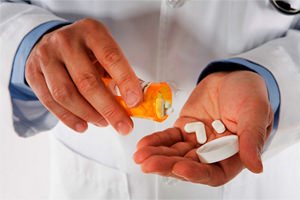
Only cholesterol stones up to 2 cm in diameter can be dissolved (this method does not work on calcareous and pigment stones). For this purpose, analogs of bile acids Ursosan, Henofalk, Urofalk, Henokhol, etc. are used.
In parallel, stimulation of the contractile function of the gallbladder and the production of bile with the help of Allohol, Holosas, Zixorin, Liobil can be carried out.
Contraindications:
Various concomitant diseases of the digestive tract (gastritis) and;
Taking oral contraceptives containing estrogens;
Pregnancy.
Disadvantages:
High recurrence rate (10-70%), since after stopping the medication the level of cholesterol in the bile rises again;
Long duration of treatment (from 6 months to 3 years);
Such side effects as diarrhea (10% of cases), changes in liver function tests (ALT and AST);
High cost of drugs.
Ultrasonic stone crushing
This method is based on the grinding of stones under the influence of high pressure and vibration of the regenerated shock wave. Ultrasound destroys stones and crushes them into smaller particles with sizes not exceeding 3 mm, which are subsequently displayed along the bile ducts into the duodenum. Ultrasonic lithotripsy is suitable for patients who have found a small amount (up to 4 pieces) of rather large cholesterol stones (up to 3 cm in diameter), without lime impurities in their composition.
Contraindications:
Blood clotting disorders;
Chronic inflammatory diseases of the digestive tract (cholecystitis, pancreatitis, ulcers);
Pregnancy.
Disadvantages:
Possible obstruction of the bile duct due to vibration;
Damage to the gallbladder walls by the sharp edges of stone fragments.
Stone crushing by laser
Access to the gallbladder through a puncture on the anterior abdominal wall. The laser beam is fed directly into the impact zone and splits the available stones. The duration of the procedure is no more than 20 minutes.
Contraindications:
The weight of the patient exceeds 120 kg;
Age over 60 years;
Severe general condition.
Disadvantages:
The likelihood of burn mucous membranes, which can later lead to the development of ulcers;
Injury of the gallbladder walls with sharp edges of the stones and obstruction of the bile ducts;
The need for special equipment.
Contact chemical cholelitholysis
This method was developed in the framework of the current trend in the development of organ-preserving treatment methods. With it, not only cholesterol stones are dissolved, but also any other types of stones. The size and number of stones also do not matter. This method can be used at any stage of the disease, and, unlike the previous two, not only with asymptomatic disease, but also in the presence of its pronounced clinical signs.
Its essence is as follows: a thin catheter is inserted into the gallbladder through the skin and liver under the control of an ultrasound, through which a special drug dissolving stones is introduced by drip. The effectiveness of the method is 90%.
Methyl tertiary butyl ether, which is a strong organic solvent, is commonly used as a drug. It is proved that the gallbladder is resistant to the cytotoxic effect of methyl tertiary butyl ether.
The disadvantage of the method is Invasiveness.
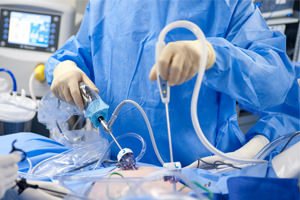
Laparoscopy is performed under general anesthesia. Stones are removed with the help of trocars (metal conductors), which are inserted into incisions in the abdominal cavity. The peritoneum is filled with carbon dioxide, a tube of the apparatus is inserted into one of the incisions to transfer the image to the monitor screen. Focusing on the image, the doctor finds and removes the stones. After the end of the operation, staples are applied to the ducts and vessels of the gallbladder. The duration of the operation is about an hour, the hospital stay is 1 week.
The indication for laparoscopy is calculous cholecystitis.
Contraindications:
Fatty meat (pork, lamb, beef) and fish;
Sausages, smoked meats, pickles;
Butter;
Legumes, radishes, radishes, eggplants, cucumbers, artichokes, asparagus, onions, garlic;
Fried, sour and spicy dishes;
Rich broths;
And oatmeal;
Fruits vegetables;
Milk and dairy products with a fat content of not more than 5%;
Lean meat and fish;
Compotes, fruit drinks, mineral water up to 2 liters per day.
- There should be no signs.
- Must be kept patency
- The gallbladder, that is, it is good to shrink.
- Only a single stone with dimensions of no more than 3 cm or up to three stones with dimensions from 1.0 to 1.5 cm are subjected to crushing.
Obesity;
Too large stones;
The presence of adhesions after surgery;
Additionally, there are violations of the secondary absorption: usually bile is used 5-6 times, making turns between the liver and the intestines, and in the absence of the gallbladder, bile acids are rapidly eliminated, which adversely affects the digestive process.
After cholecystectomy, patients often complain that pain in the right hypochondrium and in the area of the liver persists, bitterness in the mouth often occurs, food has a metallic taste.
Surgery does not eliminate the symptoms of gallstone disease. Stones after removal of the gallbladder can form in the bile ducts, and a so-called choledocholithiasis occurs.
Removal of the bubble is due to the formation of stones in it, the cause of which is the pathological change in the chemical composition of bile, and after the operation, this reason remains. The secretion of “bad” stone-forming bile continues, the amount of which increases, which has a negative effect not only on the state of the gastrointestinal tract, but also on other systems of the body.
Based on the above, we can conclude that non-invasive and minimally invasive methods can be used in the treatment of young people with the initial stages of the development of the disease, stones of small size and with the absence of serious contraindications. However, in all other cases, it should be remembered that cholecystectomy is the last way out, and it should be resorted to when all other methods turned out to be ineffective.
What is desirable to exclude from the diet?
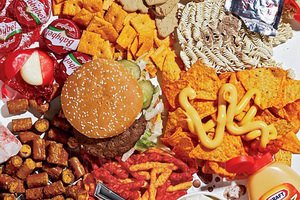
The composition of the diet is of great importance in this disease.
How is it made? What is the effect and what are the complications of this type of treatment? Who shows such treatment? Where, in which clinics it is produced? We will talk about this today!
Is it possible to crush gallstones?
Yes you can. On the technical side, there are no problems. Back in 1986, this method was applied for the first time in a clinic in the city of Munich. Applied with purpose.
This method has received a rather long and complex name - extracorporeal shock-wave lithotripsy.
What does this complex phrase mean?
If you look, everything is quite simple and corresponds to the essence of the process.
The prefix "extra", besides the familiar and familiar to all the values of "super" or "super", has another meaning - "outside".
The second part of the word - "corporal" - comes from the Latin word "corpus" - the body.
The word "lithotripsy" is translated from Greek as "stone-breaking".
Now it is not difficult to guess that this phrase means "a method of crushing stones using a shock wave, the source of which is outside the human body."
How is extracorporeal shock wave lithotripsy?
Scientists have created a special apparatus that generates a shock wave and focuses it. This apparatus is called a lithotripter.
Theoretically, these small stones should leave the gallbladder on their own, proceed along (along the cystic and common bile duct) and exit to.
In practice, the removal of stones from the gallbladder into the intestines after crushing is a very complicated process, painful, not always effective and, most importantly, fraught with serious complications.
Since the stones after crushing are not always small enough and they do not always “want” to leave the gall bladder, after the lithotripsy sessions, it is recommended to dissolve the stones with
And this method of dissolving stones, as you already know, is still very far from perfect and is not always effective. You can read about it in more detail in the article of this site, passing by.
Knowing all this, it becomes clear that the method of crushing gallstones can not be called an independent method of treatment, since after it, as a rule, should be a long and not always effective removal of stones.
What complications are possible?
The transformation of one, two or three, easily moving and sharp fragments can not be called so very reasonable. Because each of these small and, as a rule, sharp fragments, trying to get out of the gallbladder, can lead (and, as a rule, leads) to an attack or
But acute calculous cholecystitis is not the worst complication. The most dangerous complications of this method are mechanical jaundice and
But the most important thing is that after all these torments and rather dangerous manipulations, the patient is threatened with a second one, which is observed in half of the cases within the next five years after treatment.
Who shows such treatment?
Not all patients can also be crushed by stones in the gall bladder. To carry out such treatment requires compliance with a number of conditions.
Where, in which clinics it is produced?
Extracorporeal lithotripsy is not widely used in any country of the world, as it is recognized by most scientists as a dangerous and ineffective method. Therefore, only individual clinics, mainly German ones, continue to develop this method in the hope of finding a way to remove stones from the gallbladder without surgery.
Kidney stones can be crushed and removed at home.
Much is said and written about the significance of the kidneys in the vital activity of the whole organism - it is the most important organ contributing to the preservation of water and electrolyte balance in the body, which is an important component for the normal functioning and overall health of the body. These two organs perform one of the key functions - they are filters and are responsible for the timely elimination from the body of harmful waste, toxins and excess fluid from the body. One can only imagine how much waste material can accumulate in the kidneys, with the amount of non-filtered blood that is daily distilled through them.
It is known that toxins can negatively affect the normal functioning of the kidneys and at high concentrations can cause serious health complications. Thus, the presence of uric acid and crystals of other salts and minerals can cause the development of gout and lead to the formation of stones in the kidney stones. Therefore, it is vital to maintain and clean the kidneys.
Purification and treatment of the kidneys, as well as other organs, should be carried out exclusively under medical supervision. And even all methods of cleansing the kidneys and crushing stones in them at home should be initially coordinated with the doctors.
For the entire excretory system of the body to function, as it should be, it is necessary to systematically clean the kidneys. There are several ways in which you can clean the kidneys at home. Apple-lemon remedy, watermelon, celery and parsley, herbal tea are considered the best.
Apple-lemon remedy actively contributes to the destruction of stones in the kidneys and their rapid and, importantly, painless removal. This remedy is excellent for improving the overall health of the kidneys The tool is prepared as follows: you need to squeeze the juice from 3 apples (not peeled) and add the juice of half a lemon, which is an active assistant in the destruction of kidney stones.
Herbal tea is brewed in different ways from different plant collections. It is known that there are several medicinal plants that contribute to the detoxification of the kidneys. Among them, the most common are: wheatgrass, creeping grass, ursi, field horsetail, nettle and corn silk. You can brew a tea that acts as a diuretic and is one of the best fees for cleansing the kidneys. We take 2 teaspoons of dandelion root, half a teaspoon of nettle leaves, oat straw, fennel seeds, and corn silk. Pour into a container about 1 liter of water, boil it and add herbs. Cover the pot with a lid and leave for 20 minutes. Then you need to strain and drink the infusion twice a day.
Watermelon - the easiest and most delicious way to clean the kidneys. This large berry perfectly contributes to the disintegration of large stones into smaller ones, so that they can come out easily and painlessly.




